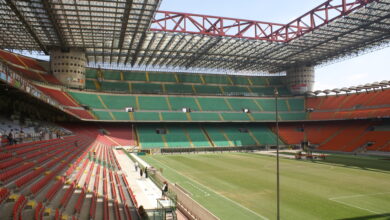
In Portugal, the 1st of December marks the so called Restoration of Independence Day. It commemorates the end of the Portuguese Restoration War, which started with the Portuguese revolution of 1640 and ended with the Treaty of Lisbon of 1668 (not to be confused with the more recent Treaty of Lisbon of 2007). In this treaty Spain recognised the sovereignty of Portugal’s new ruling royal dynasty, the House of Bragança, thus ending the Iberian Union of Spain and Portugal.
The 1st of December is a public holiday in Portugal. Local governments organise a number of cultural events and the Portuguese remember their historical heritage from a time when Portugal was one of the most important countries of the world. Monarchists use the day to emphasise the historical importance of the Portuguese monarchy and the role that they played in the development of the Portuguese nation. Here are ten other facts about Portugal; use them to impress your family, friends, and colleagues at parties and elsewhere!
1 – The country has had the same defined borders since 1139, when Afonso Henriques was proclaimed the first King of Portugal. In addition, its capital Lisbon is around four centuries older than Rome and the second oldest European capital after Athens. Historians believe that the city was founded by the Phoenicians around 1200 BC, thanks to the transport possibilities offered by the river Tagus.
2 – Portugal has one of the world’s most advanced ATM systems. It allows for more than 60 operations including charity donation, phone credit top-ups, and buying concert tickets.
3 – Portugal once had a dead queen. When Pedro I was crowned king of Portugal in 1357, he proclaimed his dead lover Inês de Castro ‘queen’, even though she had been decapitated two years earlier on the orders of Pedro’s father, King Alfonso IV. According to legend, when Pedro ascended the throne after his father’s death, he had Inês’s body exhumed and placed upon a throne, dressed in rich robes and jewels, and required all his vassals to kiss the hand of the deceased queen.

4 – Rio de Janeiro became the capital of Portugal in 1808. That year, the Portuguese royal family and most of the associated Lisbon nobles, fleeing from Napoleon’s invasion of Portugal, moved to Portugal. This is the only instance in history of a European capital being located outside of geographical Europe
5 – Portugal is home to the longest bridge in Europe: the Vasco da Gama Bridge in Lisbon. Also related to this bridge is the world record for the largest dining table, which was set on the bridge to serve lunch for around 15.000 people as part of the inauguration celebrations.
6 – On All Saints’ Day 1755, Lisbon was hit by one of the most severe earthquakes in European history. The quake had a magnitude of around 9.0 on the Richter scale and was followed by a tsunami that almost destroyed the city. Because it happened on All Saints Day, churches were filled with candles, which caused major fires when they toppled and fell. 275.000 residents were killed and 85% of the buildings were left in ruins. The Secretary of the State of Internal Affairs’ response at the time was not limited to the practicalities of reconstruction. He ordered a questionnaire sent to all parishes of the country regarding the earthquake and its effects. He was the first to attempt an objective scientific description of the broad causes and consequences of an earthquake. Because of this, the Marquis of Pombal is regarded as a forerunner of modern seismological scientists.
7 – Portugal and England have been allies since 1373 with the Anglo-Portuguese Treaty. This alliance has been resealed in 1386 at Windsor, making it the longest unbroken treaty still in effect today.
8 – In 1968, Prime Minister Salazar suffered a cerebral hemorrhage. He was expected to die shortly after, so President Américo Tomás wasted no time replacing him with Marcelo Caetano. However, despite the hemorrhage, Salazar lived for a further two years. When he unexpectedly recovered partial lucidity, his intimates did not tell him he had been supplanted. Instead, he was made to believe he was still in power for the next two years of his life, until his death in July 1970.

9 – It is world leader in the production of renewable energy. Almost 70% of its energy needs are covered by hydro, wind, and solar power. Portugal is also able to convert the movement of ocean waves into electricity and energy, making the country one of the least worried about a future shortage of energy.
10 – Based on the number of Portuguese inhabitants, the second-largest “Portuguese city” is actually Paris, France. There are nearly 700.000 Portuguese living there. But Paris is not the only place in Europe which attracts many Portuguese people: around 12% of the population of Luxembourg is also Portuguese.





